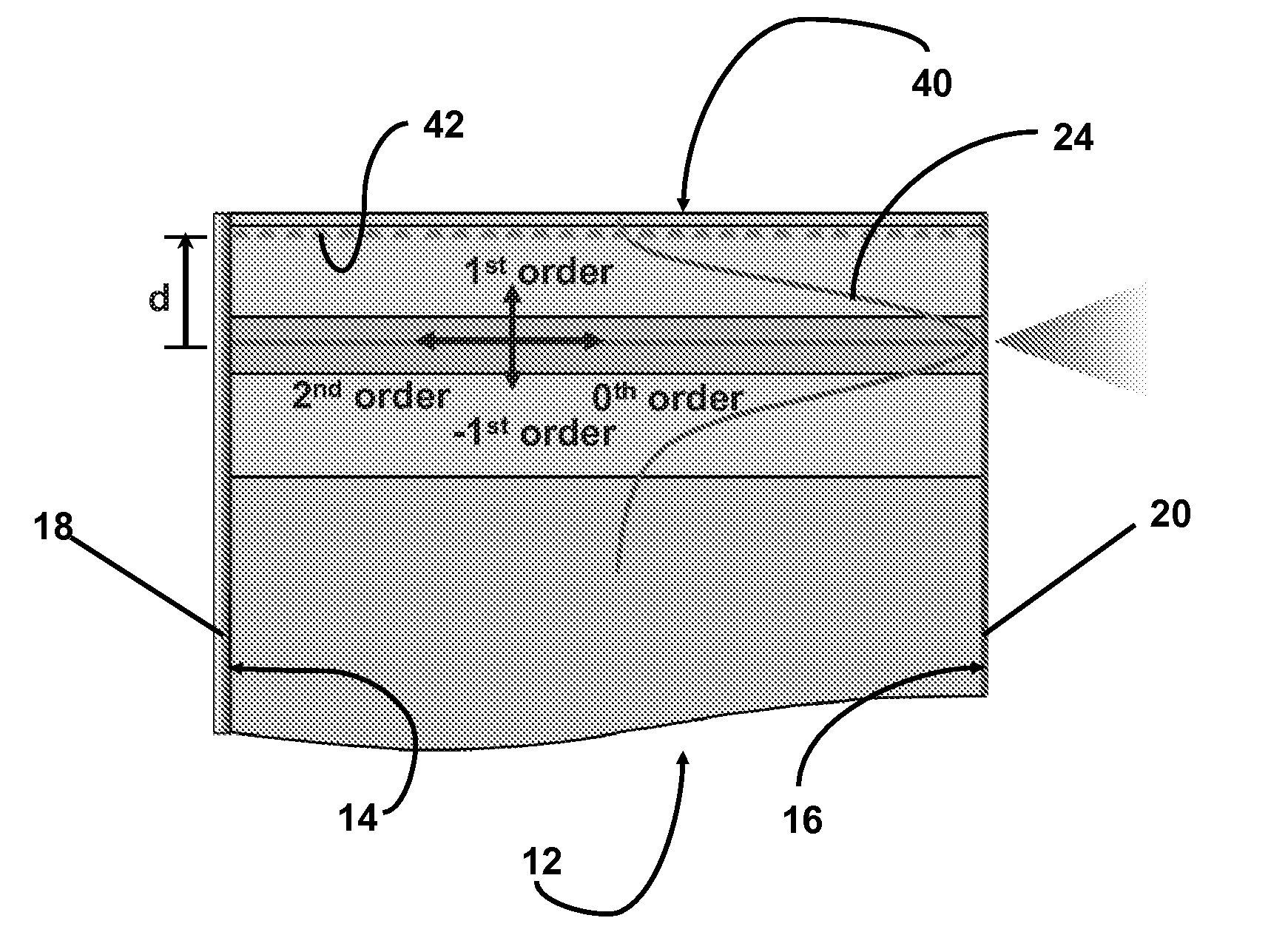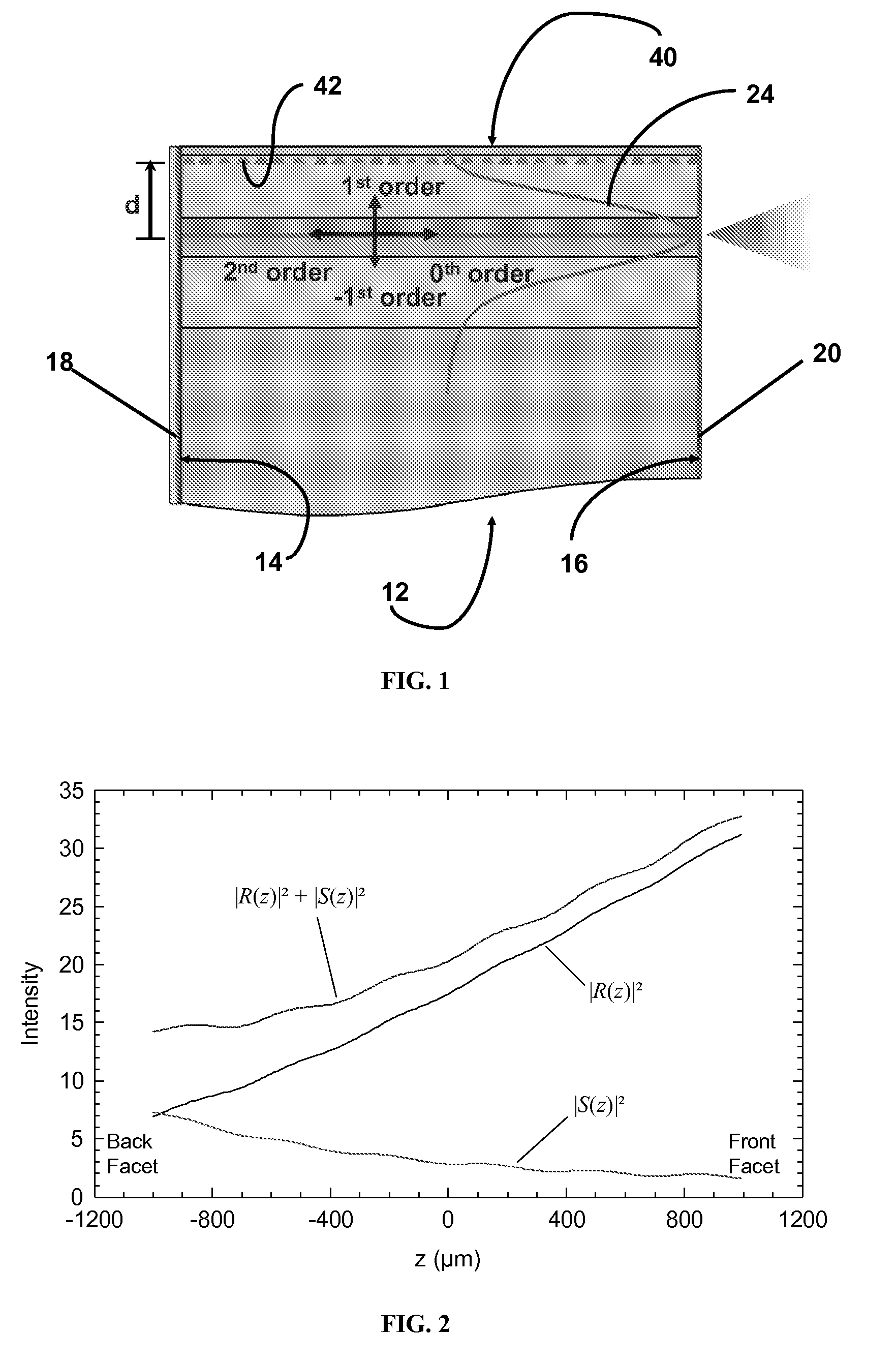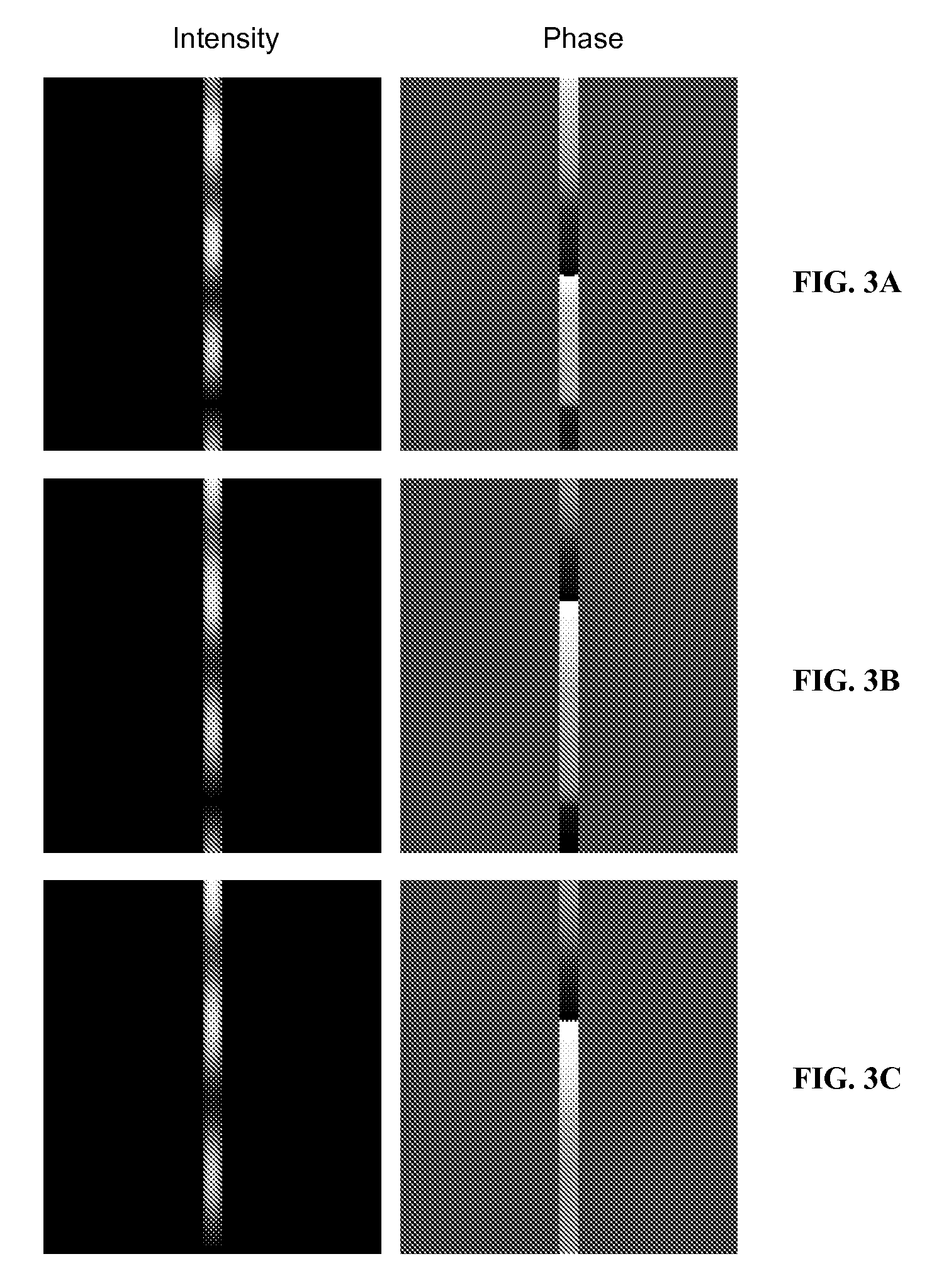HIGH EFFICIENCY PARTIAL DISTRIBUTED FEEDBACK (p-DFB) LASER
a semiconductor laser and partial distributed feedback technology, applied in the direction of lasers, semiconductor lasers, optical resonator shape and construction, etc., can solve the problems of poor power conversion efficiency of second-order dfb lasers, less attractive diode lasers as pump sources for these applications, and additional optical power loss incurred compared to fp or the first-order dfb, etc., to achieve the effect of increasing the efficiency of composite lasers
- Summary
- Abstract
- Description
- Claims
- Application Information
AI Technical Summary
Benefits of technology
Problems solved by technology
Method used
Image
Examples
example 1
Model of Partial-Length DFB
[0046]FIG. 4A shows a hypothetical example of an idealized full-length grating having a random cleave that allows the standing wave to be aligned with the peaks and valleys of the grating. This mode is strongly discriminated for by the laser because it has zero radiation loss as compared to the mode with the standing-wave peaks centered on the grating, which has maximum radiation loss. Because this hypothetical “random” cleave does not occur naturally, FIG. 4B illustrates a preferred embodiment of the invention comprising a partial grating that allows alignment of the standing wave due to its separation from the front and rear facets. This is true exactly when the right- and left-going wave intensities are the same but still has a significant effect when they are unequal.
[0047]The FP resonances have an integer number m of half-wave nodes between the facets:
mλ=2nL (1)
where n is the index of refraction and L is the cavity length. There is a DFB region alon...
example 2
Theoretical Design
[0052]An example of one design according to an exemplary embodiment of the invention is shown in FIG. 5. If Δλ=±0.25 nm and L=2 mm then x should be between 100-400 μm and LDFB=400 μm (min. and max. are the same in this case). The value x=200 was chosen. This design is shown drawn to scale in FIG. 5.
[0053]The design shown in FIG. 5 was tested using the mathematical model, above. The longitudinal field is shown in FIG. 6. The conditions were otherwise the same as those in FIG. 2 and have similar overall field profiles. Most significantly, the surface-emission power (e.g. 1st order power loss) dropped from 2.1 to 0.3 percent of the front-facet power—a factor of seven. Several different facet-cleave phases were tried and the results were similar in each case. FIG. 7 shows a typical near field surface emission from such an embodiment where the left panel shows the phase intensity image and the right panel shows the phase image. As illustrated, both the intensity and pha...
example 3
Fabrication Of The Laser
[0054]The DFB lasers were made with a two-step epitaxial growth process. The first growth comprised epitaxy of 0.6-μm thick N-cladding and 1.1-μm thick broad-waveguide core with 3.21 and 3.39 index of refraction, respectively, terminated with 0.2-μm thick InGaP layer of 3.21 index of refraction, which subsequently serves as the bottom portion of the grating layer. Second-order gratings 100-nm deep were fabricated in this layer using holographically exposed photoresist patterning and subsequent transfer of these grating patterns onto the underlying cladding layer was accomplished using reactive ion etching (RIE) technique. The second order grating has a pitch of Λ=λ / neff=0.290 μm, where λ=0.975 μm is the vacuum wavelength and neff=3.36 is the effective index of the fundamental mode in the waveguide. The remaining 0.6-μm thick P-cladding layer comprised a 0.3-μm thick (n=3.32) layer and a 0.3-μm thick (n=3.23) layer. Finally a 0.15-μm thick ps-cap GaAs layer wa...
PUM
 Login to View More
Login to View More Abstract
Description
Claims
Application Information
 Login to View More
Login to View More - R&D
- Intellectual Property
- Life Sciences
- Materials
- Tech Scout
- Unparalleled Data Quality
- Higher Quality Content
- 60% Fewer Hallucinations
Browse by: Latest US Patents, China's latest patents, Technical Efficacy Thesaurus, Application Domain, Technology Topic, Popular Technical Reports.
© 2025 PatSnap. All rights reserved.Legal|Privacy policy|Modern Slavery Act Transparency Statement|Sitemap|About US| Contact US: help@patsnap.com



